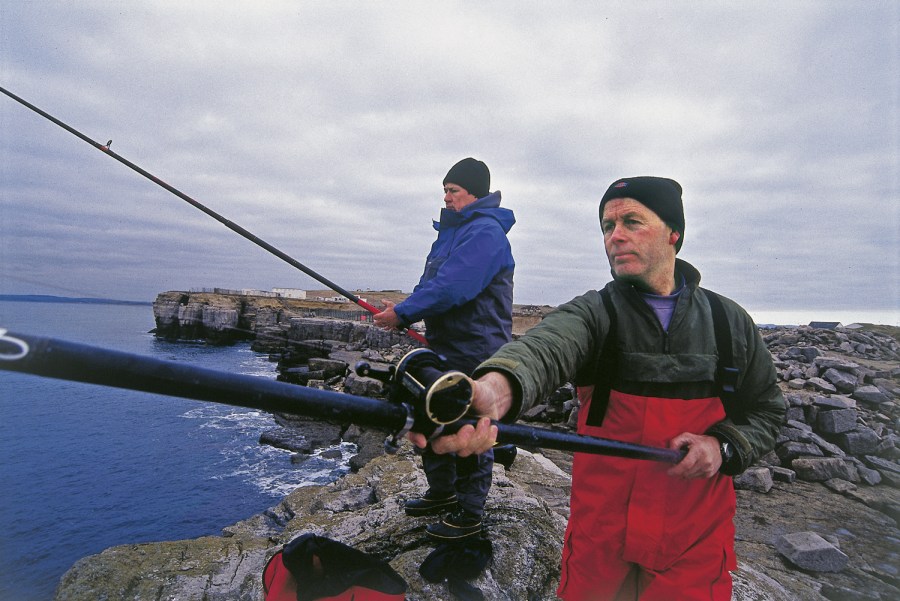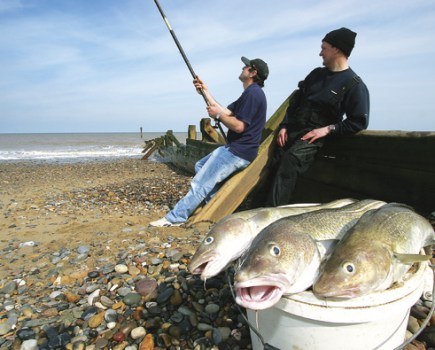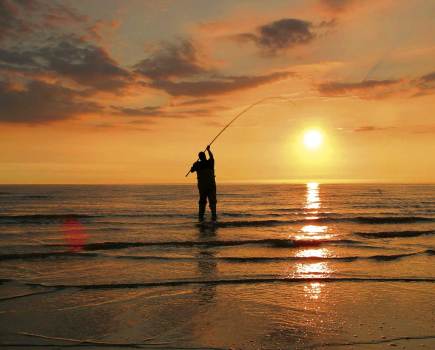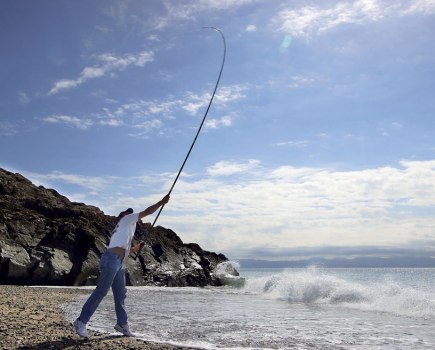Wrasse fishing is often a holiday pastime centered around a few hours of float fishing at a handy harbour breakwater or rock mark, where a cooler bag full of cold soft drinks and a decent pair of sunglasses are as important as your bucket of bait.
So why was I standing on top of Portland Bill’s famous Pulpit Rock on a bitterly cold and frosty day freezing my bits off a week before Christmas 2005…fishing for wrasse. Surely, the scientists have got this global warming thing completely wrong?
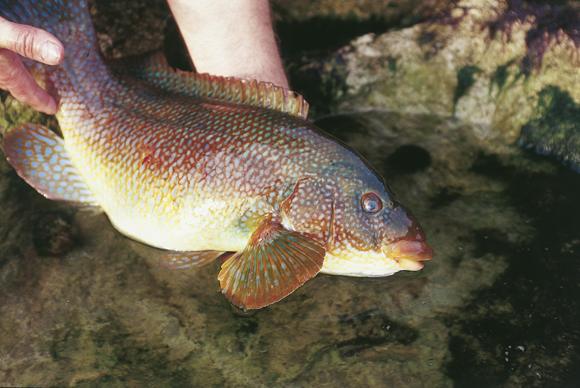
There were three of us sat on top of this exposed rock, including my regular angling pal Byron Way and local shore angling expert Pete Hegg.
When it is running the tide literally powers past Portland and Pete had told us it would be pointless attempting to fish until the thundering flow started to ease towards low-water slack. Yet we had to claim our places on the rocks two hours early in order to secure the hot spot on to top of Pulpit, such is the popularity of this extraordinary venue.
Take it from me, two hours of waiting to fish on top of an exposed Dorset rock outcrop in mid-December tests the most ardent angler’s enthusiasm. Bet you have tried the hot coffee cup hand-warmer trick?
The upside was the waiting time gave Pete a window to brief us on the fishing. Originally from Cheshire, Pete moved to Portland over three decades ago when he was serving in the Royal Navy and based at the famous dockyard.
Always a keen angler, for years Pete’s RN status gave him privileged access to fish inside the dockyard, but of course he spent a lot of time exploring further afield, notably Chesil Beach, the Purbeck coast and the southern coast of Portland, including Pulpit Rock, which is a five-minute drive from his home.
With such a wealth of fishing opportunities at his fingertips you would expect Pete’s personal best list to make impressive reading and it does. He has caught cod to 20lb 10oz, gilthead bream to 6lb, several 40lb-plus conger eels, bass to 12lb 10oz and plaice to over 4lb… all from the shore.
But it is Pete’s personal best ballan wrasse that sets him apart from other anglers, a clonking great 9lb 1oz brute that since 1998 has topped the British shore record list. And guess what? We were fishing in exactly the same spot where he caught the record-breaker all those yeas ago.
I expect you can sense my excitement and it wasn’t because Santa was just a week away.
Before continuing this tale I should also tell you that, for many years, Pete and his son Martin were the only father and son duo to simultaneously hold British records. Back in 1990 Martin, then just eight years old, caught a 1oz 2dr butterfly blenny to establish a record that has only recently been broken. Ironically, it was only beaten after Martin, who at the time was crewing aboard the Weymouth charter vessel One-For-His-Knob, correctly identified the bigger fish one of the anglers had caught on the boat.
Pete is undoubtedly an extremely knowledgeable and committed angler, for besides his record fish he has landed several over 7lb and a great many over 5lb, the benchmark for what many wrasse anglers regard as being a big ballan wrasse.
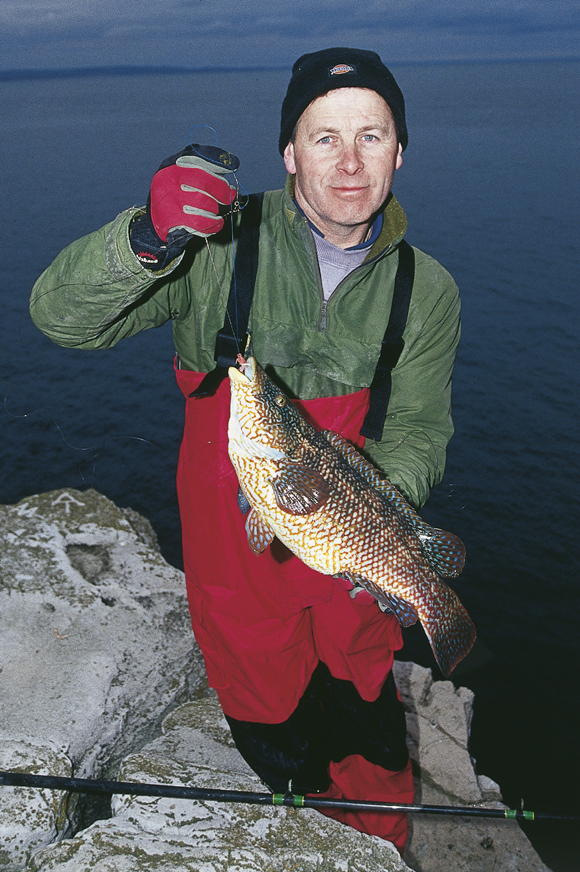
Lost – a 12lb ballan
As the tide eased I was keen to learn more and asked Pete if he had ever lost a wrasse he felt was even bigger than the record. I could almost see his mind flashing back to one particular morning, when he was fishing in the dockyard.
“My lad Martin and I were fishing a match,” recalls Pete, “and the youngster was using a tiny little rod to snatch small wrasse, pout and other species close to the wall.
“Eventually he wandered off to play with his mates, as young lads do, leaving me to watch his rod. Before too long I noticed the light tip rattling to the tune of a hooked fish, so I picked up the rod and tried to reel in.
“Once the fish felt resistance the light rod tip was pulled down savagely as a good fish tried to escape. At first I though I had a bass on the line, which wasn’t good news for me bearing in mind the gear I was using.
‘I didn’t really expect to land whatever I had hooked, so I tried to be patient to draw it towards the surface. I was still convinced I was attached to a bass, so you can imagine the shock when the mother of all ballans rolled on the surface, a tiny little goldsinny wrasse clamped firmly in its jaw.
“My problems were just beginning because I was fishing off a high harbour wall and had to try and lead the wrasse some 30 feet to some steps.
“Things started out well enough until the fish decided it had had enough, opened its mouth and spat out the smaller fish. To my horror the big wrasse hadn’t even been hooked.
“Even now I flashback to that day because it was a double -figure fish that may have weighed around 12lb.”
It certainly makes you question whether or not it was this single fish that keeps him on the trail of those big ballan wrasse?
Tricks of the trade
Time was ticking by and I wanted to land a wrasse, particularly with the challenge of such strong tides and a gear graveyard waiting below the waves.
We had equipped ourselves with meaty beachcasters that had enough poke to wrestle a 5oz sinker and muscle-packed wrasse up to the surface. Pete had urged us to fish with fast-retrieve reels that had the ability to hold several hundred yards of 30lb line. Fine but what about terminal gear?
“You’ve got to keep things simple,” advised the master. “It’s common sense that the more bits and pieces built into your rig, the more chance there is of something getting snagged or breaking.
“My only concession to terminal gear is a three-way swivel tied directly to the end of my mainline. To the bottom I attach a short length of 30lb line to which the sinker is tied, no rotten bottom, and to the other eye I tie a 30lb hooklength.
“Some anglers use a stand-off loop, but from my experience they are not as strong as the three-way swivel.
“When it comes to bait choices you have two options,” says Pete, “hardback crabs – either common green shore crabs or velvet swimmers – or hermit crabs. Hermits will catch you more fish, but there’s no doubt if you want a bigger ballan then bait up with a hardback.
Worms and peeler crabs will also take plenty of smaller fish, especially throughout the summer. Pete first removes all of the legs then the carapace of a hard crab. If it’s a big one he’ll cut it in half, which really gets the juices flowing. Smaller crabs are fished whole. The perfect hook is a 2/0 Kamasan B940.
That’s just the sort of key information Byron and I needed. What left me confused was the fishing season, which I had always thought peaked in autumn.
“The best wrasse fishing starts in October and continues right through into the New Year, with everything hinged on water temperature. Certainly from my experience sport peaks around the Christmas,” confirmed Pete.
“We will soon see,” I quietly chuntered under my breath as Pete lobbed a bait some 60 yards out from Pulpit over a deep ledge rising up from the sea bed.
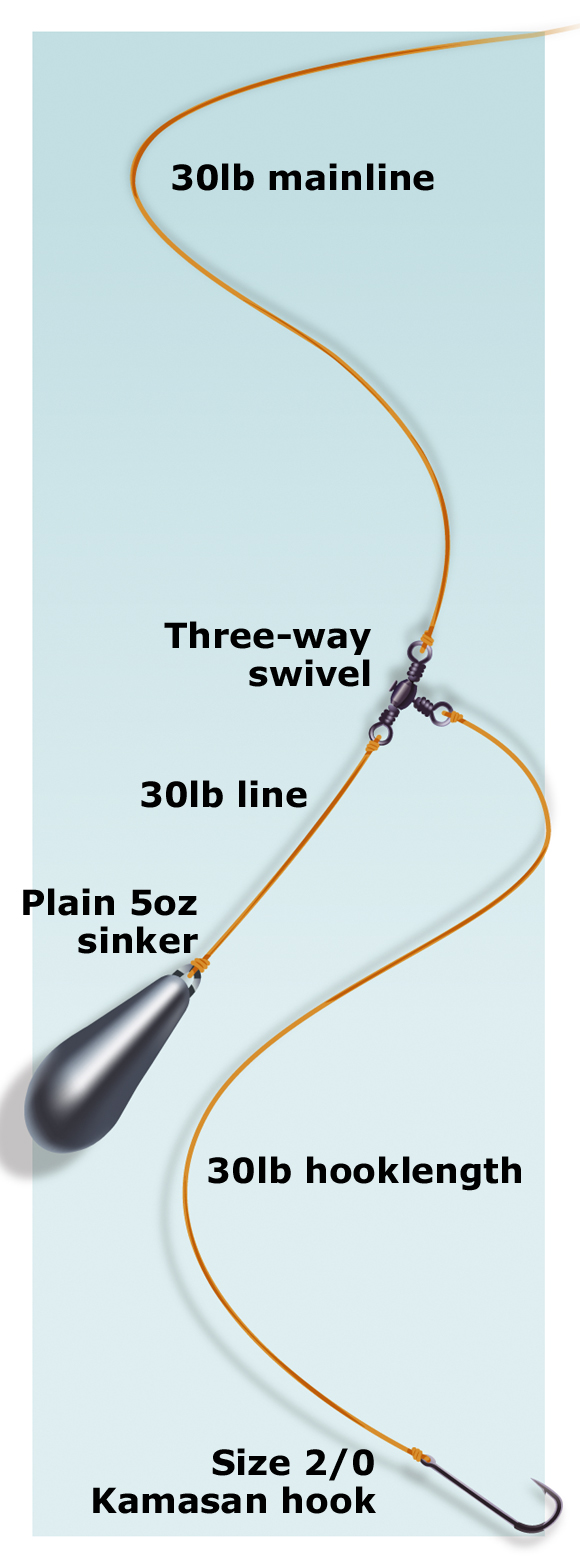
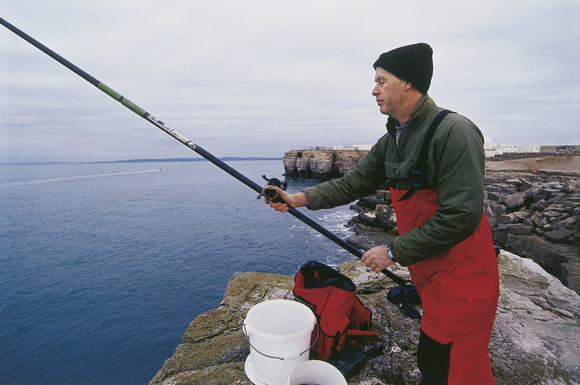
Hang on, here we go
Pete not only talks the talk but walks the walk, so within minutes was clocking up his first bite. He missed that fish, we had already been warned to expect plenty of missed bites or end up snagged.
A tip here from the Hegg fishing guide is if you find yourself locked solid into a fish that has gone to ground immediately give slack line, which could result in the fish pulling the lead free. It worked a couple of times for us.
Pete’s second cast produced a thumping bite followed by a bent rod that resulted in him handlining a solid fish straight up the side of Pulpit. And what a first fish it was; our session kicked off with a colourful 4lb 15oz beauty, which was released back into the tangle of kelp, rocks and tumbling seas. Fish number two fell to Pete’s rod, another 4lb-plus cracker, and during the next couple of hours we had bites galore. Biggest fish I photographed before the tide kicked in weighed over 5lb. I bet you can guess who caught it.
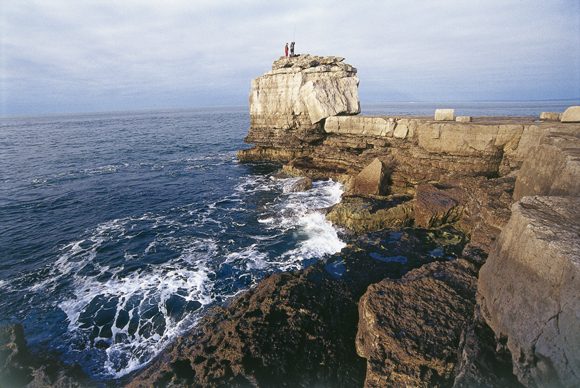
FACT FILE
Portland and Pulpit Rock must be one of the hottest wrasse marks in the country.
Three anglers can comfortably fish off the top, but obviously you need to be extremely careful. Having fished Pulpit I can’t say I’d relish the prospects of fishing here at night and obviously the weather should always be a consideration; the mark is exposed to southerlies.
This is definitely not a mark that is suitable for junior, elderly or less able anglers. There are plenty of suitable flat ledges either side of Pulpit that also produce plenty of fish.
Other species on the cards include mackerel, pollack, conger eels, garfish, bass and a few cod – occasionally very big ones, all depending on the season.
You can fish off Pulpit on all sizes of the tide, with the prime time being from two hours before low water, up to two hours before the next high tide, based on Weymouth tide times.

GETTING THERE
To get to Pulpit, follow the signs from Weymouth over the Ferrybridge onto Portland then the brown tourist board signs out towards the lighthouse. There is a pay and display car park with toilets and a café, but be sure to pay for your ticket otherwise you will get a parking fine. It’s a short walk to Pulpit Rock, which you’ll find located on the western corner. Convenient hand and foot holes have been cut into the rock… but please be careful.

